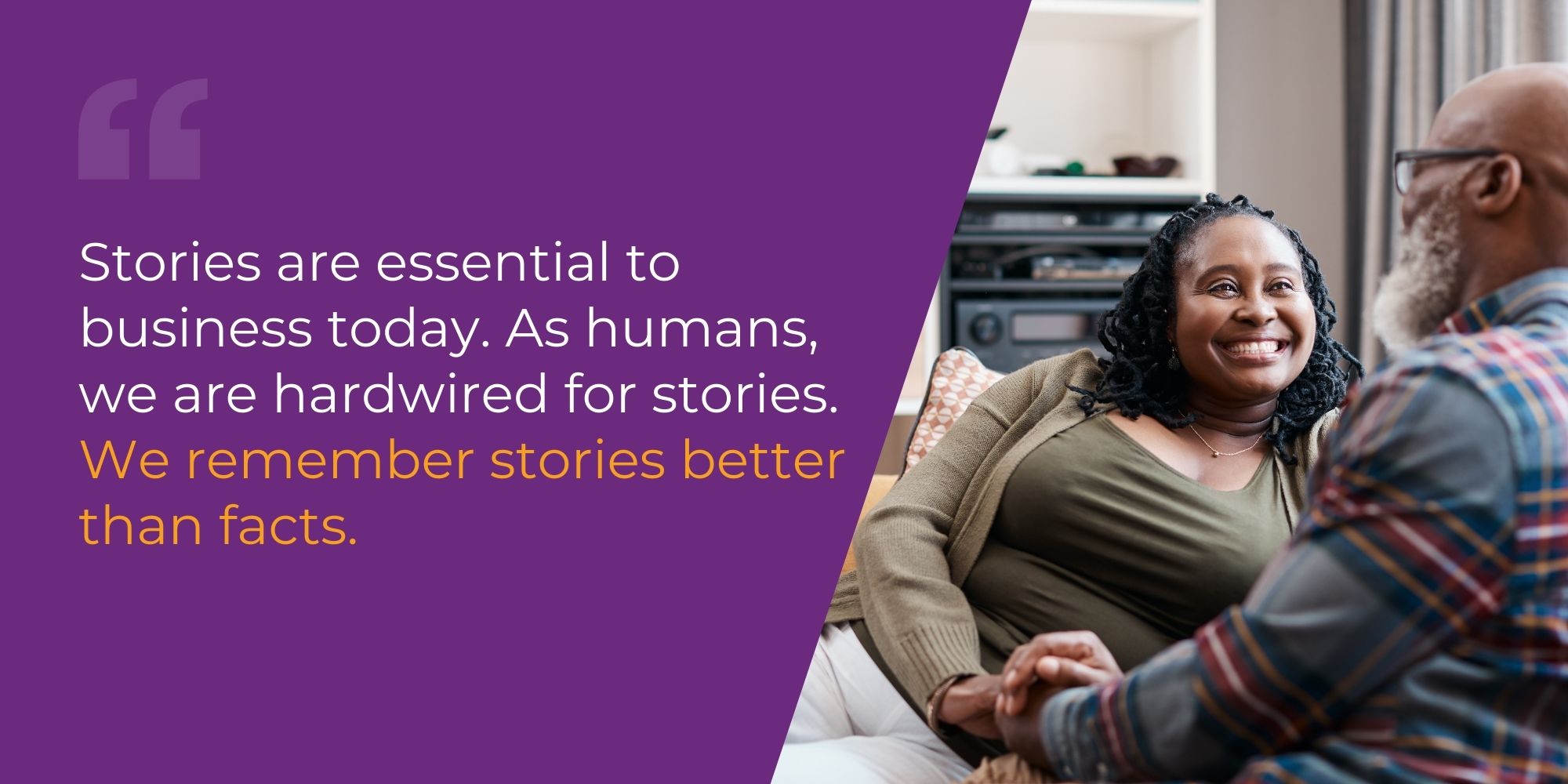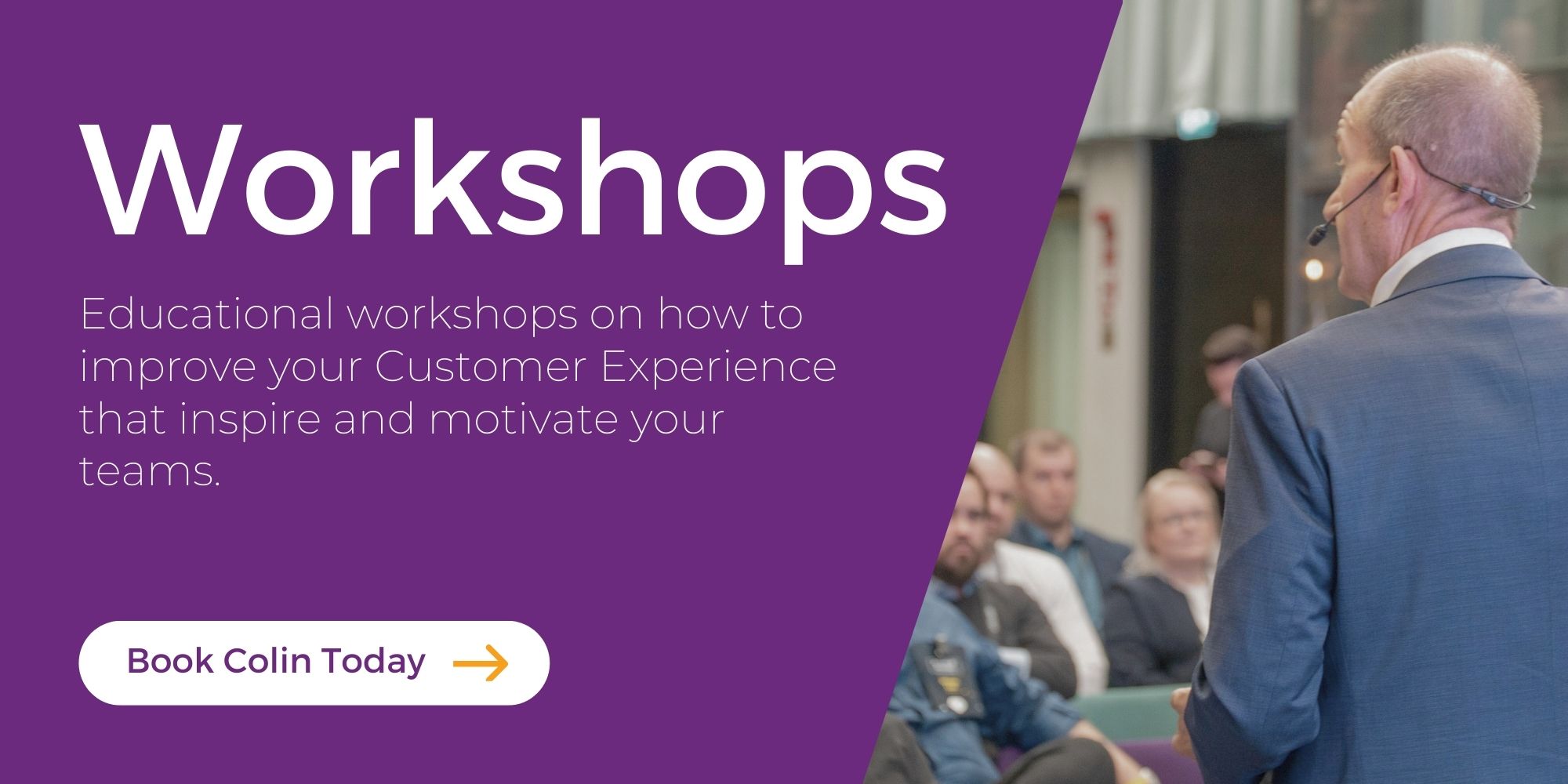Learn more about Colin Shaw: Join over 80,000 people on our LinkedIn Newsletter list or visit our website for more great podcast episodes.
Listen to the podcast:
Once upon a time…
These four words are the unmistakable beginning of a story, and if there is one thing we humans love, it’s stories. We love them in our news, in our dinner conversations, and even in our commercials. Storytelling is an essential part of communication with customers, too. Today, we examine why storytelling is a powerful tool in a marketer’s toolbox.
Our love of stories has to do with attention and memory. Narratives draw us in and interest us in what happens next. By contrast, stats, facts, and figures may or may not interest you.

However, another reason we like stories is it helps us remember things. Generally, we have more trouble remembering things if they have no context. Embedding random data within a memory structure helps us recall it when needed.
Also, since you know that memories are connected, stories give the information you need to remember a lot more connections to other memories. Emotions help reinforce what you remember, so an emotional story is even better for helping people remember it.
How Stories Help in Business
Storytelling applies to every aspect of your business. Many organizations have already used storytelling at the founder myth level. They are good at telling the story of how it all started with the organization.
There are some similarities between them, too. Many businesses began in someone’s garage. Or there is the “rags to riches” theme that often appears in these stories. That’s a part of the storytelling that creates emotional connections with a brand. If you like the idea of the founder coming from humble beginnings or the tale of a successful person being self-made, it might be because you can relate to them. That understanding will help you feel more emotionally connected to the brand.
However, there are other applications of storytelling in business. Persuasive communications that employ storytelling are more effective than other types.
For example, my podcast partner’s research is in pricing, and he has found that participants think of price and quality as correlated. Therefore, it is difficult to equate low cost with high quality. Brands that want to communicate this to their customers need an explanation that helps them understand how that is possible. A story can help here.

A brand that uses this tactic is Ikea. Their low-price but high-quality story is about how the designers find incremental savings and how their engineers find ways to flat pack the products to reduce shipping costs, and so on. These parts of the Ikea story help people understand how to reconcile this conflicting idea of low price and high quality.
I also use stories a lot to persuade. In my career, storytelling demonstrating why they should be doing something through an example of another client facing a similar issue in their experience is very effective.
Stories can also make abstract concepts concrete for people. For instance, in 2002, people didn’t know what I meant by customer experience, so I would ask them to tell me a story about an experience they enjoyed and one they didn’t. This exercise allowed my potential clients to understand the concept personally.
I also found that 99 percent of people used emotional words when they told these stories about experiences. The phrases about “feeling frustrated” or “it was disappointing” would pop out of their mouths. These phrases allowed me to dig deeper into why they felt like they did during the good or bad part of the experience. These deeper dives helped them understand what I said about customer emotions related to their organization’s experience.

Stories also help you know what stories customers tell about you. For example, the Magic Castle in Los Angeles has a popsicle hotline for kids to get popsicles delivered poolside. This feature gets mentioned a lot on TripAdvisor because it’s interesting and unexpected.
Stories can also simplify a complicated point. For example, I tell the one about Disneyland and the salads people said they wanted, but Disney didn’t get them because it explains my point that customers don’t always know what they want, even if they say they do.
There is a bonus point to this type of storytelling, too. Sometimes, it helps people become more self-aware. Upon hearing the story about Disney, people might also remember when they said they wanted a salad but ended up eating anything but a salad. So, in this case, the story helps them understand a complicated idea and relate to it personally.
What Makes Stories Successful?
Some people are naturally good at storytelling; others…not so much. To that end, I have a list of things you should remember when creating stories.
- Keep them human-centric and emotional. Include what happened, how it made you feel, and which moments of the event made you feel that way.
- Remember the structure of storytelling. Stories have a beginning, middle, and end. So, stick to the program and develop these parts. Set the stage, share the event, and tell them how it concluded.
- Be relatable. Know your audience and ensure that what you share is relevant to their experience. Moreover, remember the culture and situation; what is a great story in one place/country/interaction might not be a great one in another.
- Keep stories clear and simple. Yes, you want to set the stage and draw people in, but a clock is running. So, keep the story clear and tell it as simply as you can to get the important parts in.
- Humor is great. While it isn’t appropriate in every story, there are a few times when a good laugh doesn’t improve a story. Laughter also creates an emotional connection.
- Remain consistent. Your stories need to match your brand message. If you are lighthearted in your storytelling, your brand message should convey that same message. Otherwise, you might alienate your audience.
- Employ all the tricks. There is timing to comedy, so use it. There are visual aids that can reinforce a message. Plus, music can add a lot to storytelling. So, if you have access to any of these creative tools, use them.
- Recognize the power of tension. Stories don’t have to have tension or conflict, but the good ones usually do. There needs to be drama, even when the story is funny. Helpful hint: the tension fits best in the middle part of the story.

Stories are essential to business today, from getting into it to getting more of it. As humans, we are hardwired for stories. We pay more attention to stories. We remember stories better than facts. So, if you want to persuade somebody to do something, buy something, or remember something tell them a story about it.
If you have a story you want to share with us, please send us a video or audio for our None of Us Are As Clever as All of Us Feature. We’d love to hear it and might feature it on the podcast and in the newsletter.

Colin has conducted numerous educational workshops, on how to improve your Customer Experience, to inspire and motivate your team. He prides himself on making this fun, humorous, and practical. Speak to Colin and find out more. Click here!


